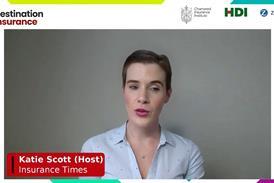Standard & Poor's insurance rating outlook
Standard & Poor's insurance rating outlook
Stable outlook for the Dutch non-life insurance market Standard & Poor's has established a stable outlook for the Dutch non-life insurance market, despite uncertainty. The stable outlook suggests that insurer financial strength ratings are likely to stay the same.
The market is a mature one, with little scope for growth in traditional lines of business. Competition is fierce and reflects the open, broker-led market which has been in existence in the Netherlands for some time.
Underwriting results have been relatively stable despite intense competition, with a five-year average combined ratio between 101% and 104%. However, the growth of the healthcare sector is a key variable in determining the future stability of the non-life market. As state cover continues to retract, more people will take out voluntary supplemental cover from the private insurers.
Claims inflation, particularly for bodily injury, has accelerated and the personal accident and motor markets could suffer if non-life insurers do not manage to raise their rates sufficiently.
Changing distribution channels are also having an impact on the market. Brokers still account for 60% of all premiums, but their dominance has weakened during the past decade in favour of bank distribution and direct marketing by mail, phone and the internet. Nevertheless, brokers will always be needed to help customers understand the complicated tax and health issues, and offer advice at the point of sale. Direct distribution is more suited to simple commodity type products.
The insurance market
According to the Dutch Pension and Insurance Supervisory Board (Pensioen and Verzekeringskamer), there are 268 non-life insurers based in the Netherlands (265 in 1999).
Of the larger companies, Nationale-Nederlanden focuses on personal lines, while Interpolis caters to individuals and small and medium-sized businesses. The majority of its business is sourced from its parent, Rabobank.
In October 2000, Fortis announced the acquisition of Stad Rotterdam. Fortis subsidiary AMEV and Stad Rotterdam will continue to operate as separate legal entities within a Fortis holding company.
During 2000, the Achmea Group streamlined its operations by transferring all its non-life business from existing subsidiaries, such as Centraal Beheer and Avero, to a new company, Achmea Schadeverzekeringen. Centraal Beheer has a leadership position in personal lines sold direct to the public. The Achmea Group cemented its membership of the pan-European Eureko alliance in 2000 when it merged with Portugal's BCP/Atlantico's insurance businesses within Eureko. At the same time, the Achmea Group took a controlling interest in Eureko.
From January 1, 2001, Royal Nederland Schade took over the portfolio of business from Axa Schade, a subsidiary of Axa Verzekeringen. At a later date the business will be merged with that of Allianz Royal Nederland.
One characteristic of the Dutch non-life market is that it is fragmented, compared to many other EU member countries. The five largest non-life companies account for a modest 38% of the market, with the top ten companies achieving a 55% market share. There would appear to be scope for consolidation.
Many of the leading non-life insurers in the Netherlands also have strong positions in the life sector and life and non-life products are often marketed under a single brand to the consumer.
In common with many markets across Europe, non-life business is perceived as less attractive to underwrite than life business, as the returns are more volatile and the potential for growth much lower.
Motor business in particular is often a source of underwriting losses. Despite this, insurers are keen to maintain market share in this line as a number of different policy coverages are often marketed as a package and, while motor may not be a profitable class, the profitability of other business lines can compensate for this.
Market features
Compulsory insurance
Third-party liability insurance is compulsory for the following classes of business :
Social security insurance
The Netherlands had one of Europe's most generous social security systems. However, since 1994 the situation has changed. The government has withdrawn blanket benefits and allowed the private sector to take a greater role in the provision of welfare benefits.
The Disability Insurance Act 1994 tightened the criteria rules for disability benefits and reduced the level of benefits offered. The General Surviving Relatives Act 1996 replaced the General Widows and Orphans Act, reducing the number of surviving relatives eligible for benefits. The Sickness Act of 1996 amended the 1994 Act and made employers responsible for the first 12 months of absenteeism instead of the first six weeks.
The compulsory disability insurance scheme, managed by private insurers on behalf of the government, was used by employers as an alternative to redundancy to disengage workers. In 1993 the system was changed to limit the period of eligible allowances for young workers. Later, premiums were priced according to how often a company claimed under the scheme. The Invalidity Insurance Act 1996, effective January 1998, introduced rating differentials on how often an employer uses the scheme and has also given them the option to opt out and seek alternative provisions.
Further reform is expected, following a review of state disability benefits currently underway. There are estimated to be in excess of one million people claiming such benefits, out of a working population of just eight million.
Since the reforms started in 1994, non-life insurers have been keen to establish market positions in what was perceived as a potentially lucrative sector. Results have, however, been disappointing and, up until recently, this sector has been loss-making. It is currently thought to be at break-even point.
Healthcare insurance
There is an earnings threshold beyond which individuals are required to pay for the provision of long-term healthcare. As a result, approximately 30% of individuals purchase private health insurance. This is treated as non-life insurance for regulatory and accounting purposes.
There is currently a political debate on the scope of reform of the long-term healthcare system and insurers are lobbying in favour of the withdrawal of state provision. In the medium term, there could be an opportunity for significant growth for non-life insurers if state provision is reduced.
Policyholder protection scheme
The government does not operate any form of policyholder protection scheme, largely due to resistance from insurers rather than the reluctance of the Pensioen and Verzekeringskamer. It is worth noting that there have been no instances of the failure of non-life insurers. However, there is a fund for motor insurers (Waarborgfonds Motorrijtuigen), which imposes a levy on all companies underwriting motor business and is used to compensate victims of uninsured and untraced drivers.
Premium tax
Most classes of business have a premium tax of 7%. However, life, personal accident, sickness, workers compensation, travel insurance, reinsurance and aviation are exempt.
Insurance exchanges
Two insurance exchanges (bourses) exist, in Amsterdam and Rotterdam, for the co-insurance of very large risks that cannot be written wholly by a single company. In these exchanges a single large risk can be presented to several insurance companies and agents in one building for them to take a share. These exchanges form the Dutch Insurance Exchange Association.
Brokers
Insurance intermediaries are regulated by the Supervision of Insurance Intermediaries Act 1991 and must be registered with the Social and Economics Council. Only authorised intermediaries may use the words "broker" or "agent".
The Dutch insurance broker market is well developed in comparison with the rest of continental Europe and, with a 60% market share, represents an important product distribution network for insurers. Their dominant position remains in the commercial sector, although the personal sector has seen market share eroded by the growth of direct telesales, direct marketing, affinity groups (companies, clubs and charities organising insurance for their own employees or members) and, increasingly, banks. The government is currently proposing to deregulate the market.
On January 1, 2000, a bill was enacted whereby policyholders could receive rebates, discounts and profit commissions. The introduction of fee-based remuneration alongside commissions is still being discussed.












































